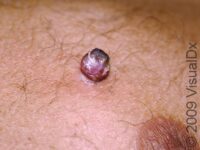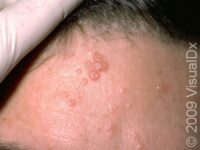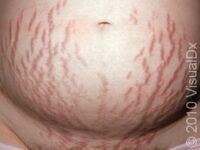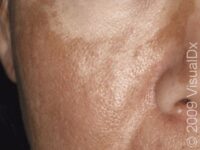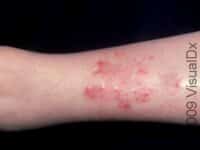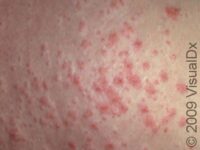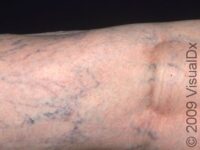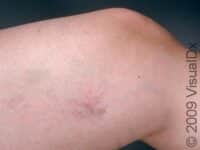Changes in hormone levels during pregnancy can produce a wide variety of changes in the skin, many of which are unavoidable. Most of these skin changes disappear on their own after childbirth.
Pregnant women face many potential common skin changes, including stretch marks (striae), acne, a dark vertical line on the belly (linea nigra), darkening of many other skin areas (such as the area around the nipples, inner thighs and vulvae, and of pre-existing freckles and moles), mild itching, minor nail changes, morning facial swelling, red or itchy palms, and small dilated blood vessels (telangiectasias, or spider veins) of the face, neck, chest, and arms.
In some women, more prominent changes or problems occur during pregnancy. Changes in moles are common in pregnancy, but these changes often raise concern as to whether they are due to a transformation to a cancerous mole (melanoma), as one of the most common signs of melanoma is a changing mole. In addition to moles changing, small growths may occur and some viral infections (warts and molluscum) may worsen. Another common problem during pregnancy is the development of melasma, also known as the mask of pregnancy, with patchy, brown marks on the face. Occasionally, the genetic tendency to hair loss may be accelerated by the hormonal stresses of pregnancy. Swelling in the legs may lead to skin changes there (stasis dermatitis) as well as enlarged veins (varicose veins).
Some skin conditions during pregnancy might require medical attention. These include severe itchiness with or without a rash; changes in the color, shape, or size of a mole; or sudden weight gain of 5 pounds or more with puffiness of the eyelids, which could mean that you are retaining too much fluid and have high blood pressure.
Click any of the images below to learn more about what skin changes are common during pregnancy.
